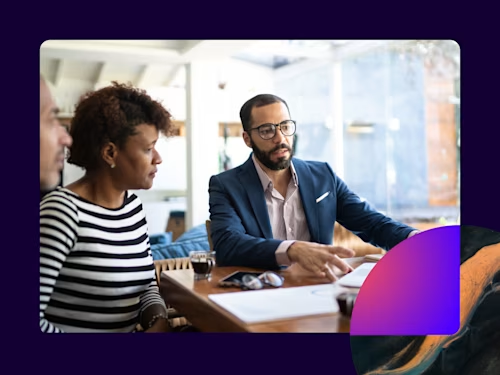
4 ways to turn work time into quality time
Discover how to create seamless HR workflows that allow your teams to win back time for human connection and deliver digital-first experiences.

The competition to attract and retain top talent remains challenging. Talent shortages and shifting workplace dynamics make it more important than ever for HR leaders to ensure their companies are providing employee and candidate experiences that stand out from the crowd. Creating seamless HR workflows that allow your teams to win back time for human connection and deliver digital-first experiences can help you win a competitive edge.
To help their organisations become an employer of choice, CHROs need to look for ways to improve efficiency and save time in their HR processes. By leveraging automation and adopting the right tech, HR leaders can spend less time on admin and more time on people. This helps them to create better employee experiences at every stage of the journey, from recruiting top talent faster to onboarding.
1. Build empathy into everything you do
Building an empathetic workplace has long been a key priority for HR leaders. After all, the opportunity to connect with people and make their work life better is probably what draws many HR professionals to the job in the first place.
Empathy can take many forms. One way to create a more empathetic workplace is to raise awareness around mental health and incorporate support into your company culture. This can include training and workshops for both leaders and employees, as well as providing access to activities and benefits that can help to reduce stress.
But empathy can also come in the form of the experiences you provide every day. Delivering a seamless, digital-first experience that respects candidates' time and doesn't overburden employees with manual tasks makes employees' work days easier and more efficient.
By removing outdated manual agreement processes and creating end-to-end digital candidate journeys, you can meet or even exceed candidates' expectations and show them that you really care.
2. Empower teams with flexible working
For many people, the pandemic meant an immediate and sudden shift to remote working. But while offices may have reopened, people still want flexibility. In fact, studies show that inflexible return-to-office policies have had a significant negative impact on employee experience scores. A recent study from Future Forum revealed that workers who don't have flexibility are 2.6 times more likely to look for a new job than those who do.
To create better employee experiences and retain top talent, HR leaders need to support flexible working by creating an experience parity. An experience parity means that employees receive the same consistent experience regardless of location. Technology is key here: secure, integrated solutions that are the same wherever employees are working from are important in order to create an experience parity between in-office and remote work.
In addition to saving time and improving consistency, this also helps to ensure compliance and data security, minimising the risks associated with working from outside the office. This is especially important when working with sensitive employee data such as contracts.
By giving employees more flexibility and choice about their working arrangements, HR teams can promote a better work-life balance, benefitting the entire organisation.
3. Free up more time for what matters
Often, HR leaders are so caught up in the day-to-day work they don't have as much time as they'd like to dedicate to key initiatives. But big-picture programmes, such as those focused on diversity, inclusion, belonging and equity (DIBE), are essential to fostering and maintaining employee happiness.
A recent Deloitte study shows that 39% of respondents would leave their current organisation for a more inclusive one and 23% have already left. This number rises to 30% of millennial respondents. CHROs need to make time to address these issues of diversity and inclusion to retain talent.
With the right solution helping you to take care of everyday agreement processes, HR leaders can spend less time switching between tools and chasing paperwork and have more quality time to think big.
4. Transform experiences from beginning to end
Despite the growing trend for digitisation and automation in HR, many organisations still rely on highly manual HR and recruitment processes that yield inefficient, clunky experiences for employees, for candidates and for the HR teams tasked with managing them.
The efficiency gains and time savings that HR teams can expect from digitisation are huge when done right. Digital tools implemented poorly can be worse than no tools at all. According to Gartner, most workers toggle between apps 10 times an hour, which adds up to 32 days per worker per year. That's a lot of lost time, a lot of lost productivity, and a lot of poor employee experiences.
For HR leaders and teams, it's about finding tools that complement rather than replace your existing HR workflows. Solutions that upgrade your processes and integrate with the other tools you use every day, such as Workday, empower you to improve efficiency where it matters. That way, there's no need to spend hours learning the ins and outs of a whole new system.
This allows you to deliver efficient, integrated digital HR experiences at every stage of the employee journey and saves valuable time that can be reinvested into your people.
Related posts

 Team SolutionsUpdated 11 Feb 2025
Team SolutionsUpdated 11 Feb 2025How to Use Docusign for ServiceNow
 Team SolutionsUpdated 11 Feb 2025
Team SolutionsUpdated 11 Feb 2025Electronic signature and legality: time to reflect

How to Use Docusign for ServiceNow

Electronic signature and legality: time to reflect
Discover what's new with Docusign IAM or start with eSignature for free
